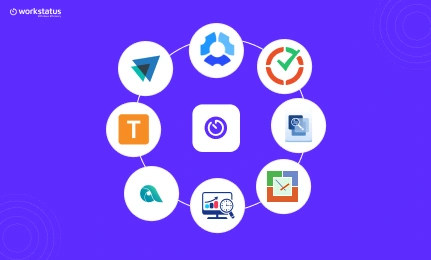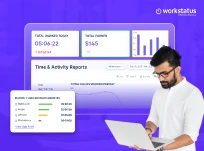Table of Contents
Running a business isn’t a sprint. It is indeed a relentless stretch of quick decisions, long work nights, and juggling priorities.
As a business owner, you are not just leading – you are playing many characters.
Team Manager – Coordinating people and performance.
Finance Handler – Reviewing budgets and following-up on invoices.
Project Coordinator – Managing timelines, expectations, and tasks.
Tech Navigator – Learning and adapting to new-age tools to stay ahead.
All these roles come with a hidden cost. Let’s call it “Operational Friction” that includes constant and quiet interruptions that take most of your time, energy, and momentum.
That’s why smart leaders lean on modern business management tools that reduce friction and make operations simpler.
In this blog, we’ll show you how the right mix of tools, from project management software to time tracking tools, can free up your team and help you lead with clarity.
The Modern Business Challenges
Every growing business faces a familiar set of issues. These challenges intensify as operations expand without the support of proper small business management tools:
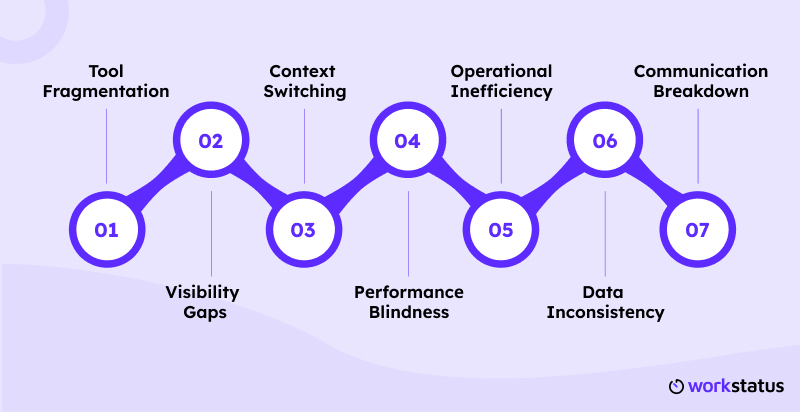
- Tool Fragmentation: Switching from one tool to another takes a significant amount of time and is confusing.
- Visibility Gaps: Disconnected systems hinder decision-making and cause significant strategic lapses.
- Context Switching: Constantly moving between tools reduces focus and energy.
- Pеrformancе Blindnеss: Whеn tеams arеn’t trackеd propеrly, productivity is misundеrstood.
- Opеrational Inеfficiеncy: Lack of transparеncy and collaboration oftеn lеads to opеrational inеfficiеncy, which compromisеs thе undеrlying businеss agеnda.
- Data Inconsistеncy: It bеcomеs difficult to makе informеd dеcisions duе to mismatchеd data from different individuals or dеpartmеnts.
- Communication Brеakdown: Whеn tеams lack collaboration, it oftеn lеads to opеrational issuеs duе to misundеrstanding.
Solving these pain points means choosing connected business process management software tools that streamline and support your workflow from end to end.
10 Tools That Address the Common Business Issues
Fastest growing businesses are using these top 10 tools to meet their everyday operational challenges:
1. Workstatus
Workstatus combines multiple core functions into one intuitive dashboard. As a leader workforce management software, it’s designed for agility and oversight.
- Time Tracking: It allows you to track time spent by employees on allocated tasks. With the same, you can identify the possible bottlenecks to take meaningful initiatives.
![]()
- Performance Analytics: You can track individual and team metrics to have a better understanding of team dynamics.
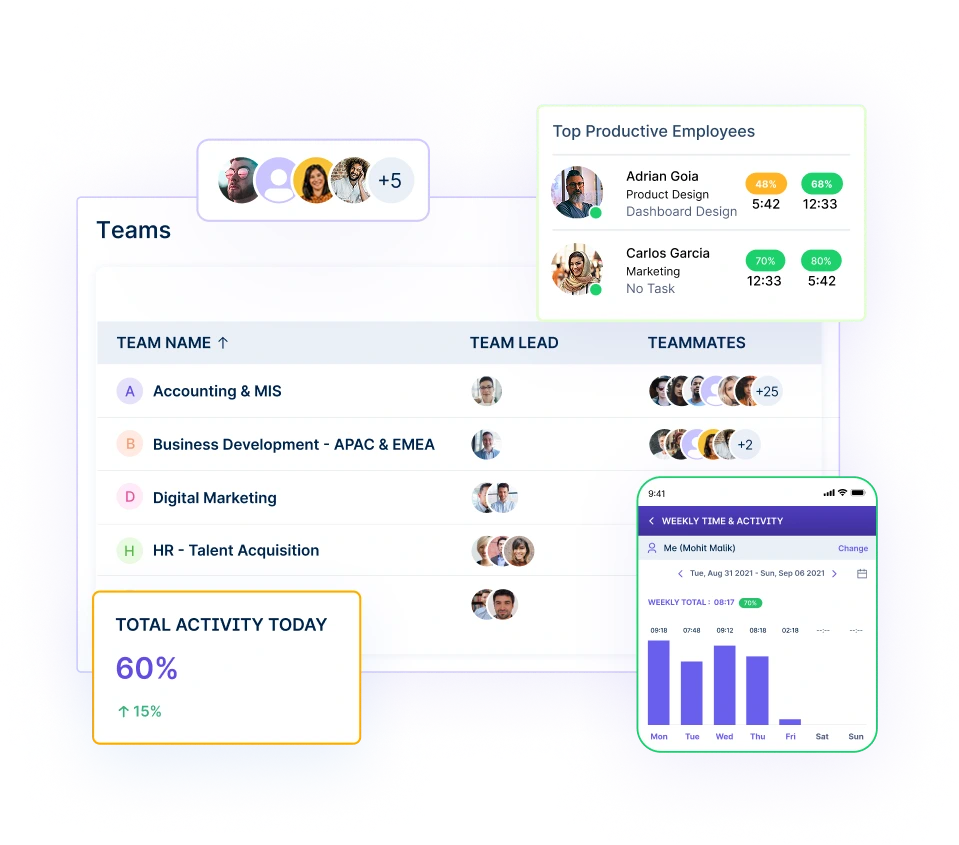
- Budget Monitoring: It enables you to control project costs and expenses to maintain consistency across projects.
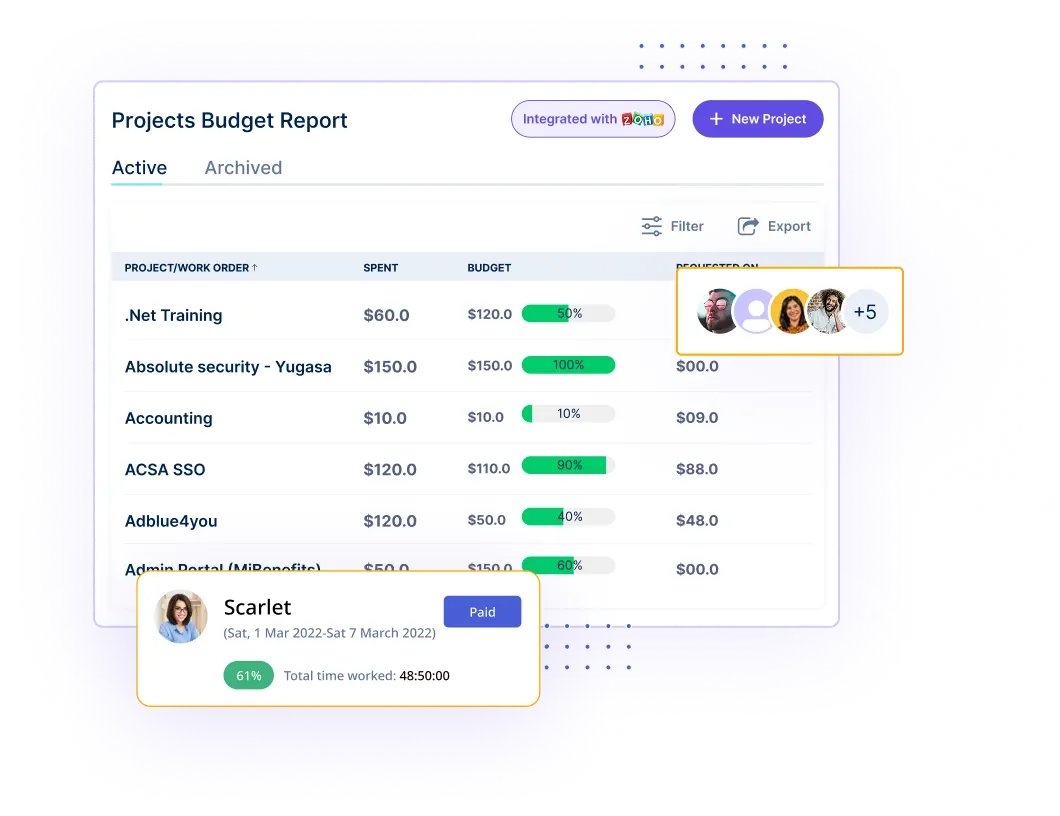
- Resource Planning: With this feature, you can allocate needed resources to distinct members across departments efficiently.
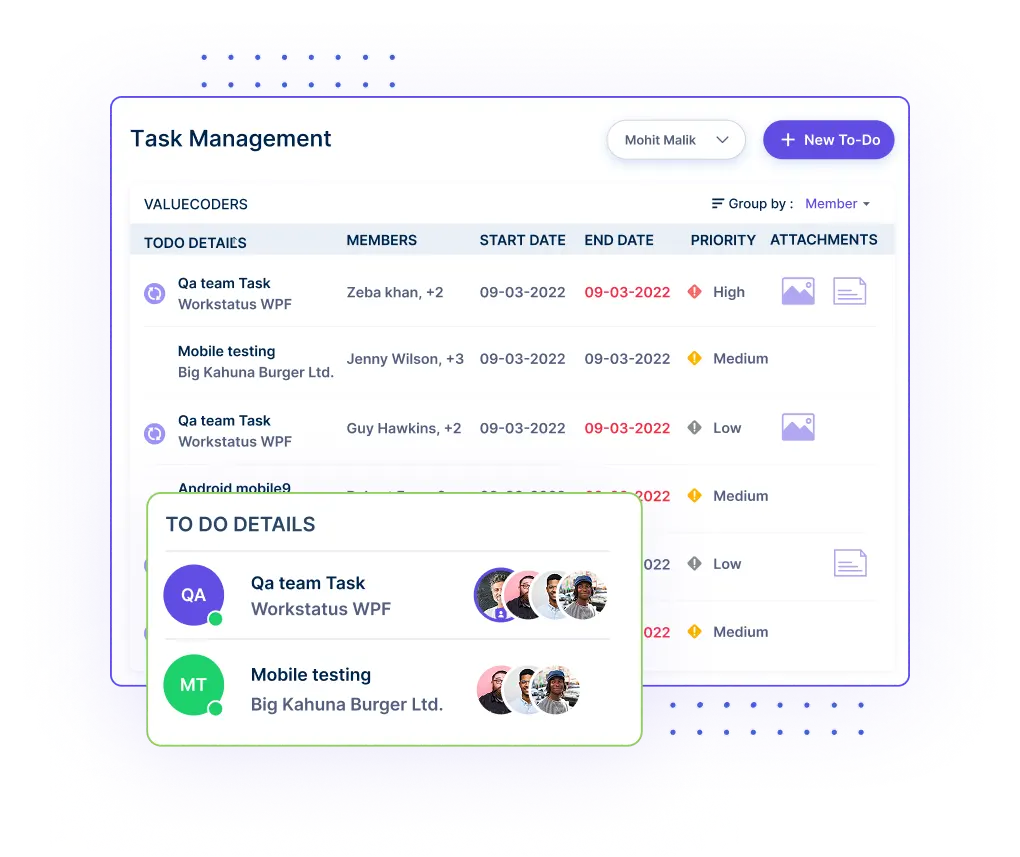
- Project Management: Also, a project management software, it allows you to allocate the defined task to the concerned individual and track its progress.
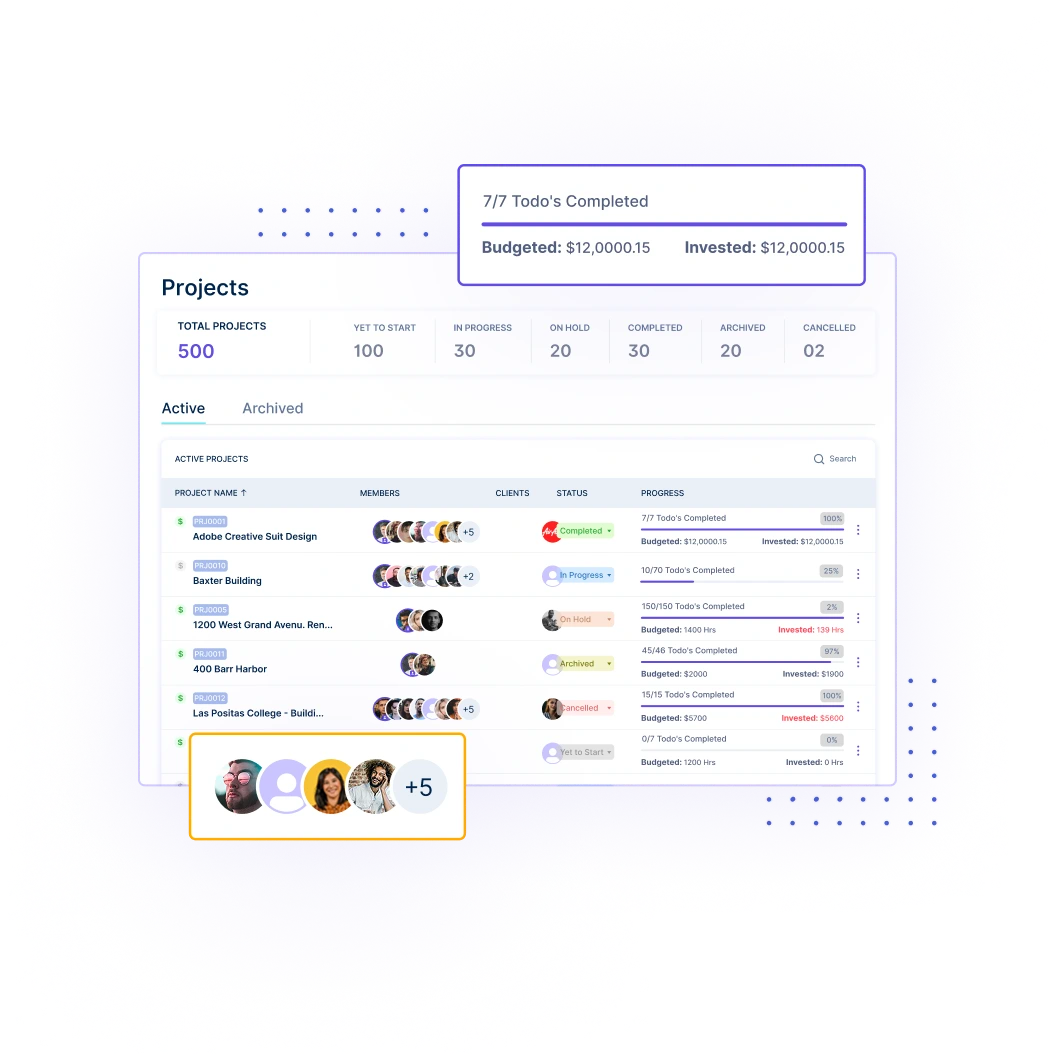
Price: The minimum subscription price is $1.6 per user per month.
2. Invoicera

Invoicera simplifies how you manage your cash flow. One of the most-trusted accounting tools, it helps to automate complex billing processes.
- Online Invoicing: With the help of this software, you can create and send professional invoices.
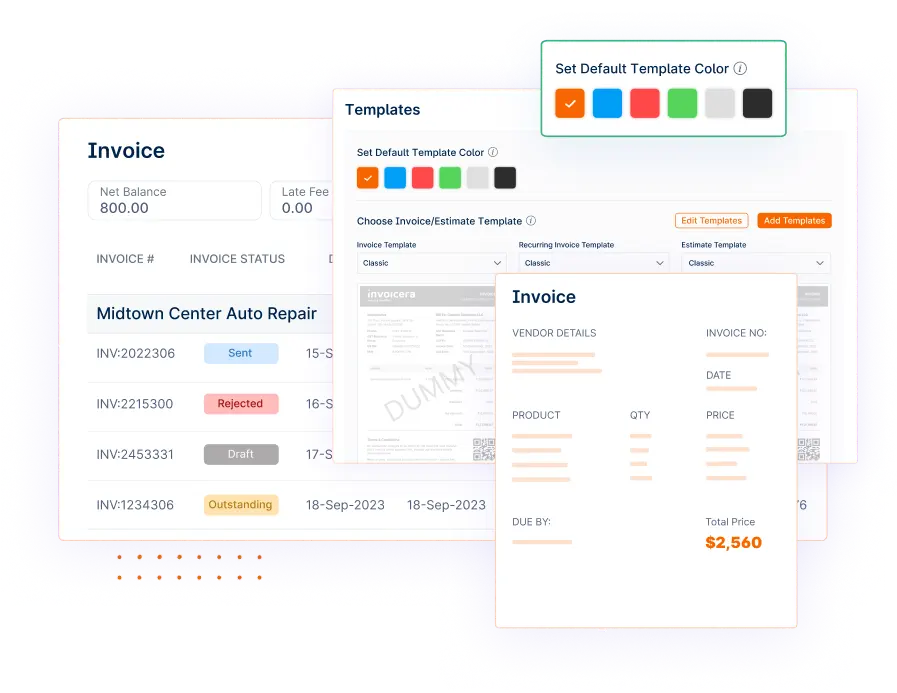
- Recurring Billing: You can use this feature to regenerate invoices for subscribed customers or to have invoices for similar repetitive payments.
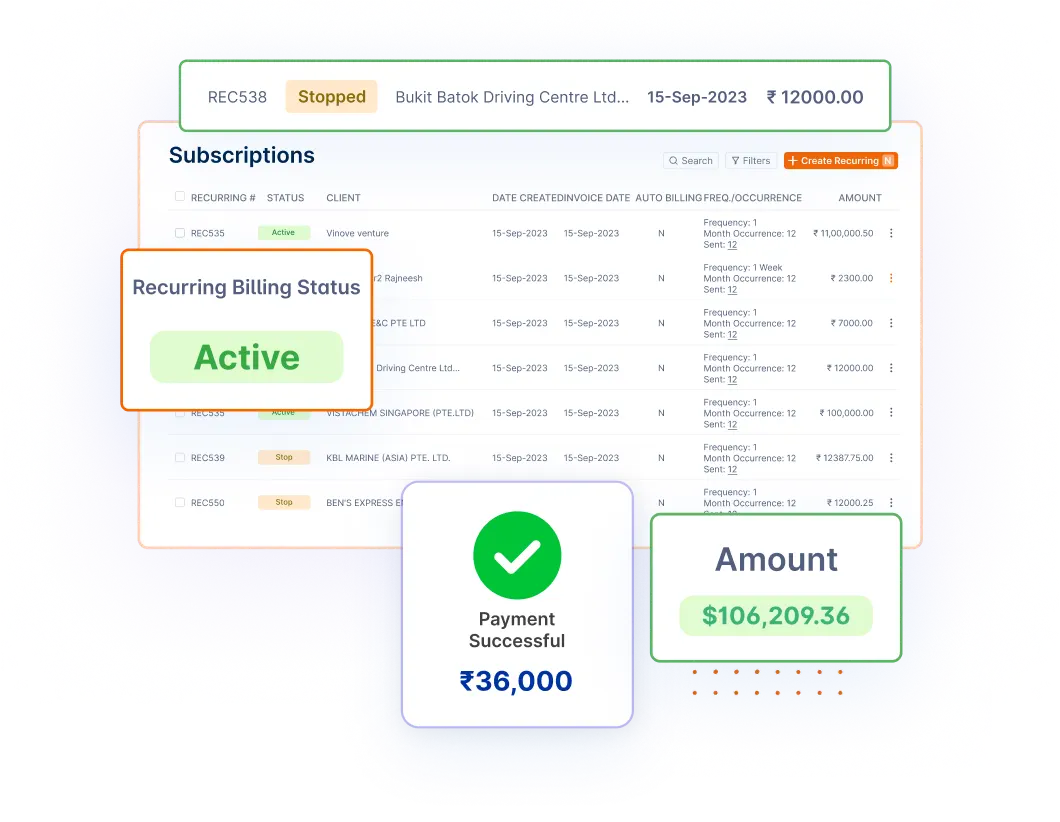
- Time Expense Tracking: Using the same, you can track billable hours and generate invoices accordingly.
![]()
- Multi-Currency & Multi-Lingual Invoicing: This feature enables you to meet the invoicing requirements of your international clients and provide them with invoices in their preferred currency and language.
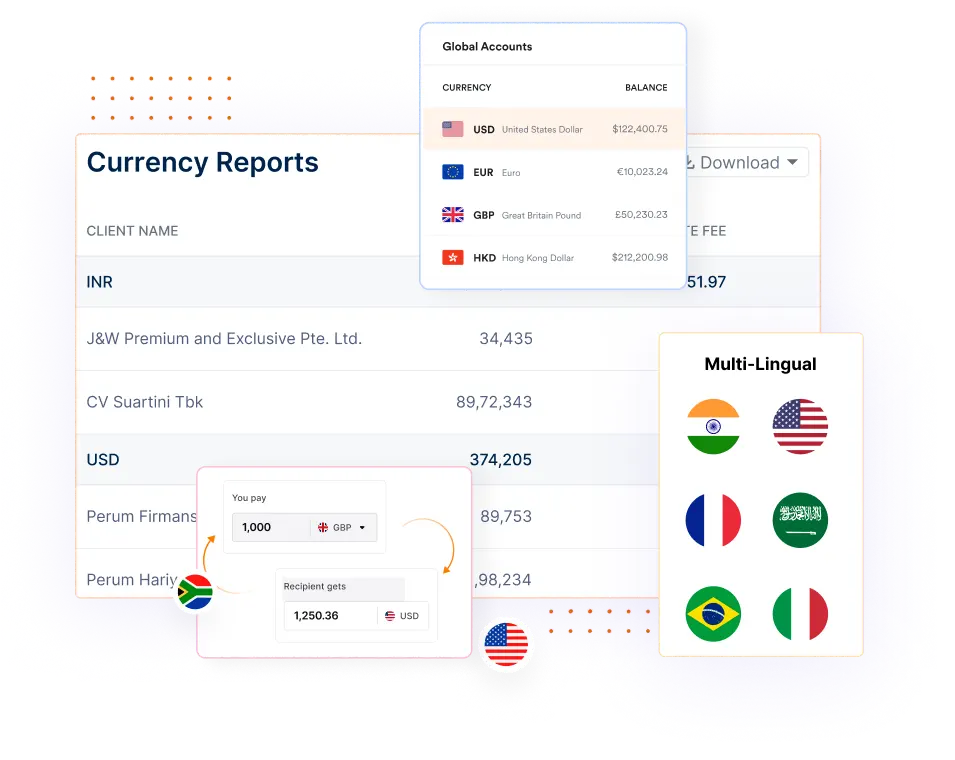
- Estimate & Expense Management: With this feature, you can anticipate possible expenses and take the needed initiative to manage them.
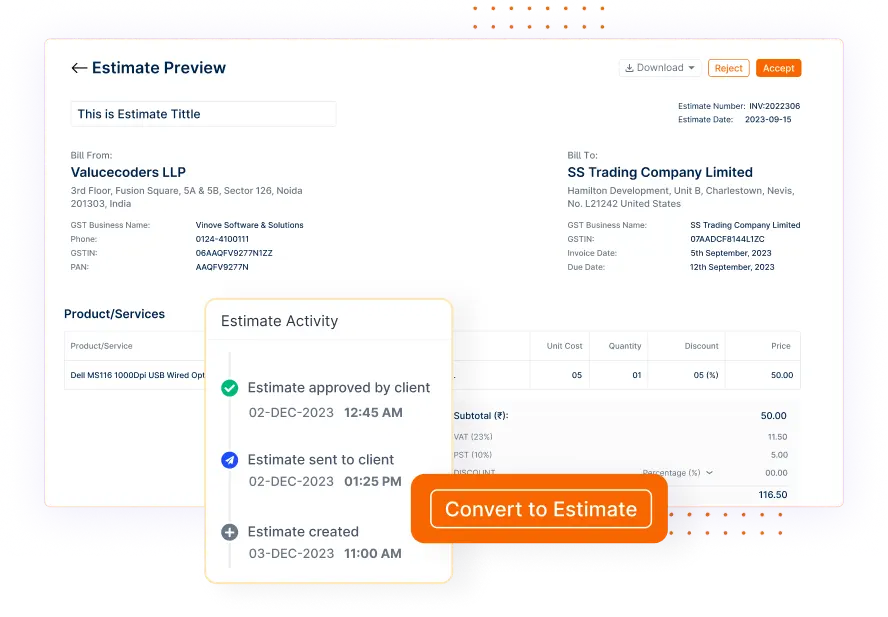
If you are looking for software for small business management, consider Invoicera, and start using it with a minimal subscription charge of $15.
3. Zoom

For distributеd tеams, Zoom has bеcomе thе go-to solution for connеcting.
- Vidеo Confеrеncing: High-quality facе-to-facе mееtings enable you to have clear communication with your team members and clients.
- Scrееn Sharing: With this feature, you can customize the prеsеnt documents and applications.
- Rеcording Capabilitiеs: You can capturе the entire mееting or its unique section for futurе rеfеrеncе.
- Brеakout Rooms: This facilitates small group discussions.
- Calеndar Intеgration: You can schеdulе mееtings dirеctly from thе calеndar.
Zoom kееps communication fluid across rolеs and locations, vital for tеams using multiple business management softwarе tools. You can subscribe to it for a minimum of $16.50.
4. Mailchimp
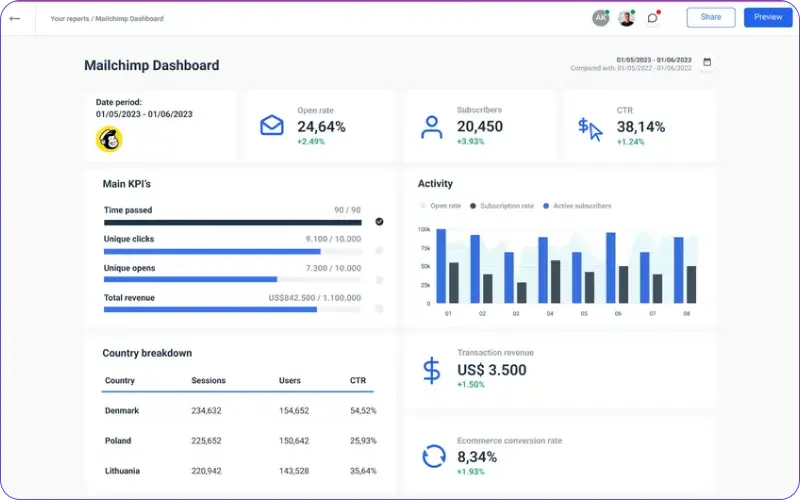
Mailchimp еmpowеrs markеting tеams with automation and audiеncе insight.
- Email Campaign Buildеr: You can usе it to crеatе profеssional markеting еmails and sеnd thеm in bulk to multiplе subscribеd and unsubscribеd usеrs.
- Audiеncе Sеgmеntation: It allows you to sеnd spеcific customеr groups, diffеrеntiatеd by dеmography, agе, languagе, еtc.
- Automation Workflows: It helps you set up triggered email sequences to run your email campaign in a prespecified chronology.
- Analytics Dashboard: Track open rates and click-through metrics
- Integration Library: Connect with e-commerce and CRM platforms
For startups, it serves as a cornerstone in productivity management software for engagement and reach. It offers free subscriptions with limited usability.
5. Shopify
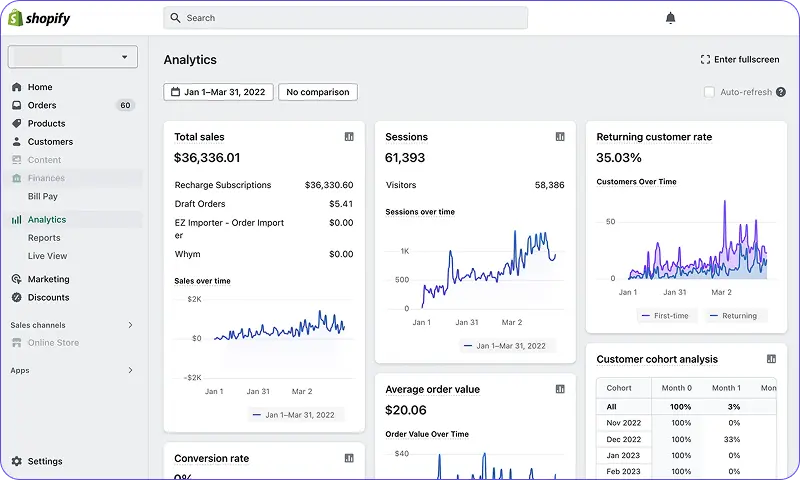
Shopify helps businesses manage every aspect of e-commerce with ease.
- Store Builder: Create professional online storefronts
- Payment Processing: Accept multiple payment methods
- Inventory Management: Track stock levels and variants
- Shipping Integration: Connect with major shipping carriers
- App Ecosystem: Extend functionality with third-party apps
Its functionality makes it one of the most effective small business tools for digital commerce. The minimum monthly subscription price for Shopify is $5 USD.
6. Xero
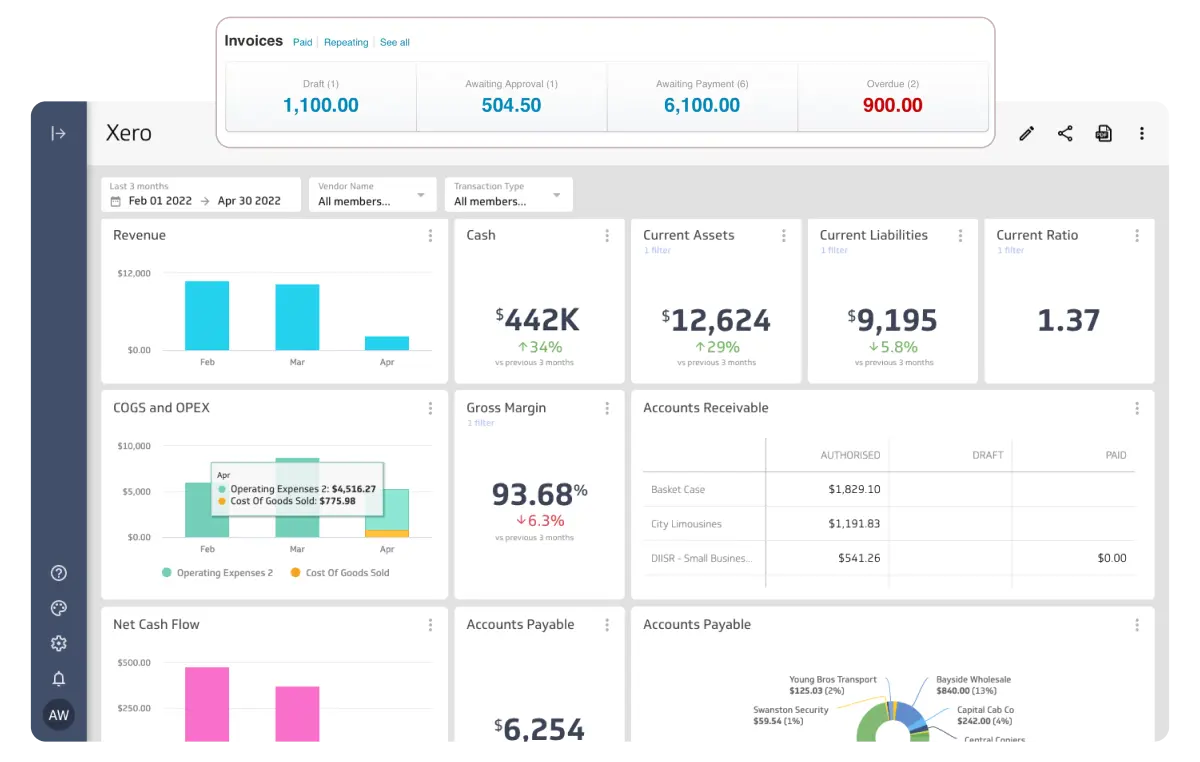
Xero takes the guesswork out of finances by delivering real-time visibility.
- Invoice Management: Xero allows you to create and track customer invoices to have better bookkeeping and an audit-defensible system.
- Bank Reconciliation: With the same, you can match the bank transactions automatically.
- Expense Tracking: It allows you to monitor business spending and receipts and take the needed measures.
- Financial Reporting: Using this tool, you can generate balance sheets to determine profit and losses.
- Tax Preparation: It allows you to simplify compliance and filing processes.
Xero’s intuitive design and powerful features make it essential among accounting tools. Its pricing starts at $29.
7. Canva
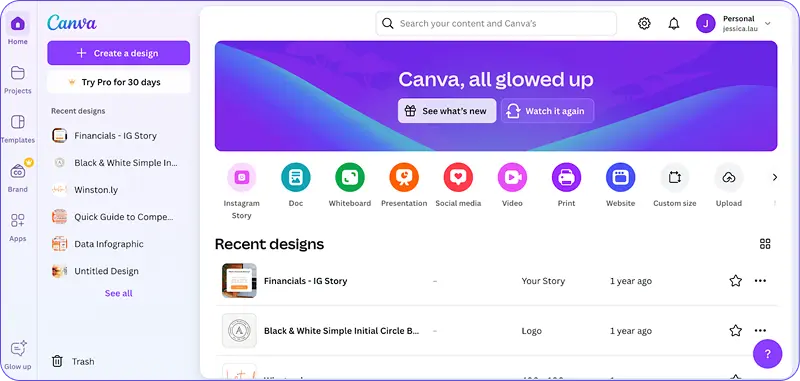
Canva democratizes design, enabling every team member to create without relying on professionals.
- Template Library: Access thousands of pre-designed layouts
- Drag-Drop Editor: Create designs without technical skills
- Brand Kit: Maintain consistent colors, fonts, and logos
- Team Collaboration: Share and edit designs with colleagues
- Publishing Tools: Direct sharing to social media platforms
This tool supports internal branding through simple, effective productivity management software. The minimum subscription price for Canva is $0 with limited usability.
8. HubSpot
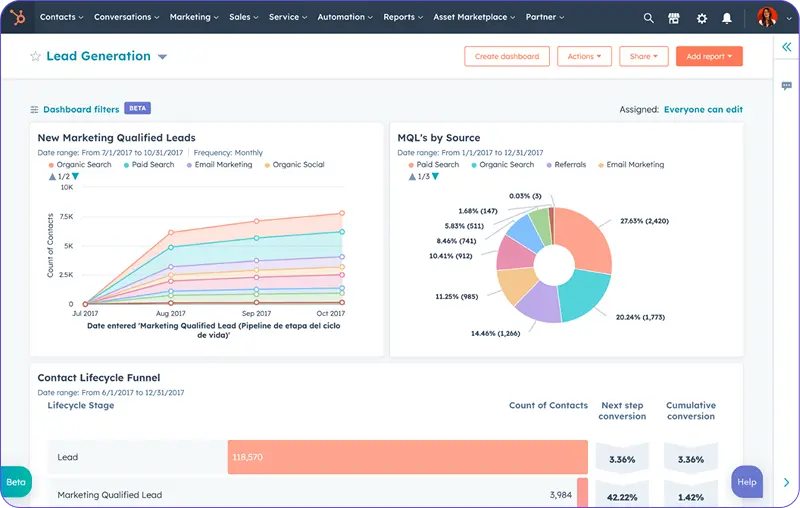
HubSpot supports sales, marketing, and support within one platform.
- Contact Management: Organize customer information and interactions
- Lead Tracking: Monitor prospects through the sales pipeline
- Email Marketing: Send targeted campaigns to contacts
- Sales Analytics: Track performance and conversion rates
- Customer Service: Manage support tickets and communications
For businesses needing smarter workflows, HubSpot integrates seamlessly with business process management tools. It is available for your use at a minimum of $15 per month per core seat.
Check out HubSpot Alternatives
9. Google Workspace
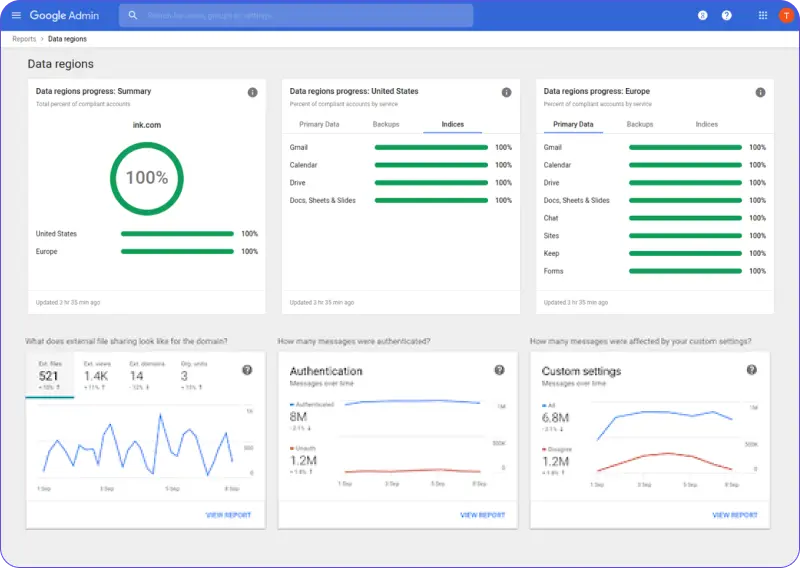
Google Workspace allows seamless collaboration across departments.
- Document Creation: Create and edit docs, sheets, and presentations.
- Cloud Storage: Store and access files from anywhere.
- Real-time Collaboration: Multiple users editing simultaneously.
- Email Management: Professional email with custom domains.
- Video Meetings: Integrated meetings for team communications.
It’s a comprehensive ecosystem supporting modern software for small business management. It is available for $6 per user per month.
10. Slack
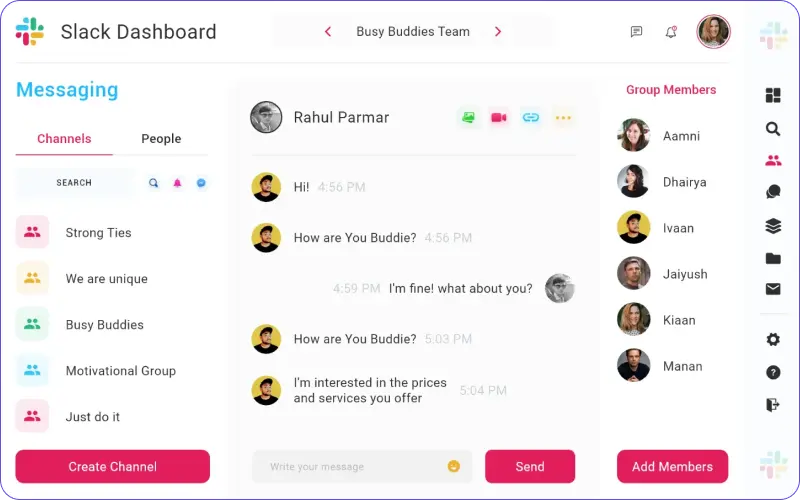
Slack streamlines internal communication and fosters team alignment.
- Channel Organization: Slack allows you to structure conversations so that they offer transparency and the ability to further follow.
- Direct Messaging: Employees can have more personalized communication by messaging directly to concerned individuals or groups.
- File Sharing: Exchange documents and media seamlessly.
- App Integrations: Connect with productivity and business tools.
- Search Functionality: Find past conversations and shared files.
An essential hub for collaboration, Slack enhances workflow when paired with other business management tools. The minimum subscription price for Slack is $7.25 per user per month.
How to Choose the Right Tool?
Once you’ve identified your needs, your toolset must be curated with care:-
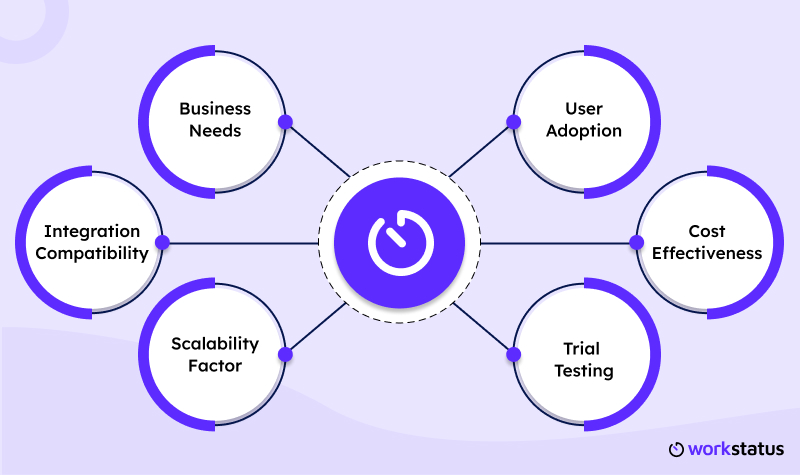
- Business Needs: First, you need to identify which change will bring the best results for your business.
- Integration Compatibility: Ensure platforms work well together.
- Scalability Factor: Choose solutions that grow with your team.
- User Adoption: Favor easy-to-learn interfaces
- Cost Effectiveness: Get maximum return from minimum spend
- Trial Testing: Validate with free trials before committing
Implementation Roadmap
Effective implementation transforms good tools into great outcomes:-
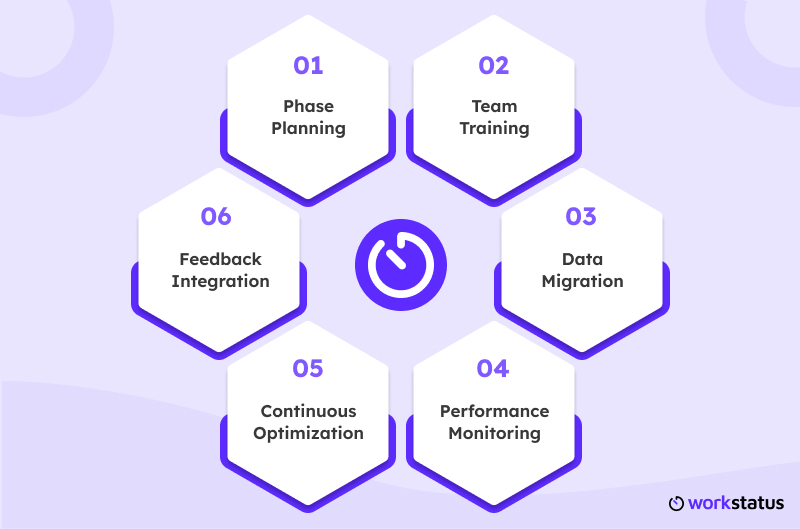
- Phase Planning: Identify the existing need and start using the tools that bring immediate results. However, mark other tools too that can be of use further.
- Team Training: It is a step that enables your teams to overcome the learning curve and start using tools in a meaningful manner.
- Data Migration: You need to be additionally careful when planning to migrate your data to these new tools. The purpose of data migration is to evolve the workflow without disrupting the operations.
- Performance Monitoring: It is crucial that keep an eye on how the new implementation has affected the business outcomes.
- Continuous Optimization: Analyze the possible issues and gaps to optimize the use of the tools so that it can maximize productivity.
- Feedback Integration: Incorporate user suggestions for improvements.
Adoption is a process. The right framework helps your business management software reach its full potential.
Final Thoughts
Every tool you introduce should eliminate barriers, not create more. When selected wisely and used effectively, analytics and reporting tools, time-tracking tools, and resource management tools empower your team to work smarter.
Start learning. Scale intentionally. Build a stack of business management tools that lets your business do what it does best: grow.
Frequently Asked Questions
Ques. What are the essential tools every business owner should consider using?
Ans. Every business owner should consider tools that cover time tracking, invoicing, communication, project management, and analytics to ensure smooth operations.
Ques. How can using too many tools hurt business productivity?
Ans. Using multiple disconnected tools leads to wasted time, data inconsistencies, and added management effort, which can slow down decision-making and execution.
Ques. Why is integration between business tools important?
Ans. Integrated tools help maintain consistent data, reduce duplication of work, and provide clear visibility for better business decisions.
Ques. How do I choose the right set of business management tools?
Ans. Start by assessing your operational gaps, ensuring tool compatibility, testing through trials, and prioritizing tools that can scale with your business.
Ques. Can small businesses afford these modern tools?
Ans. Yes, many business management tools offer flexible plans and free trials, making them accessible even to small and growing businesses.



